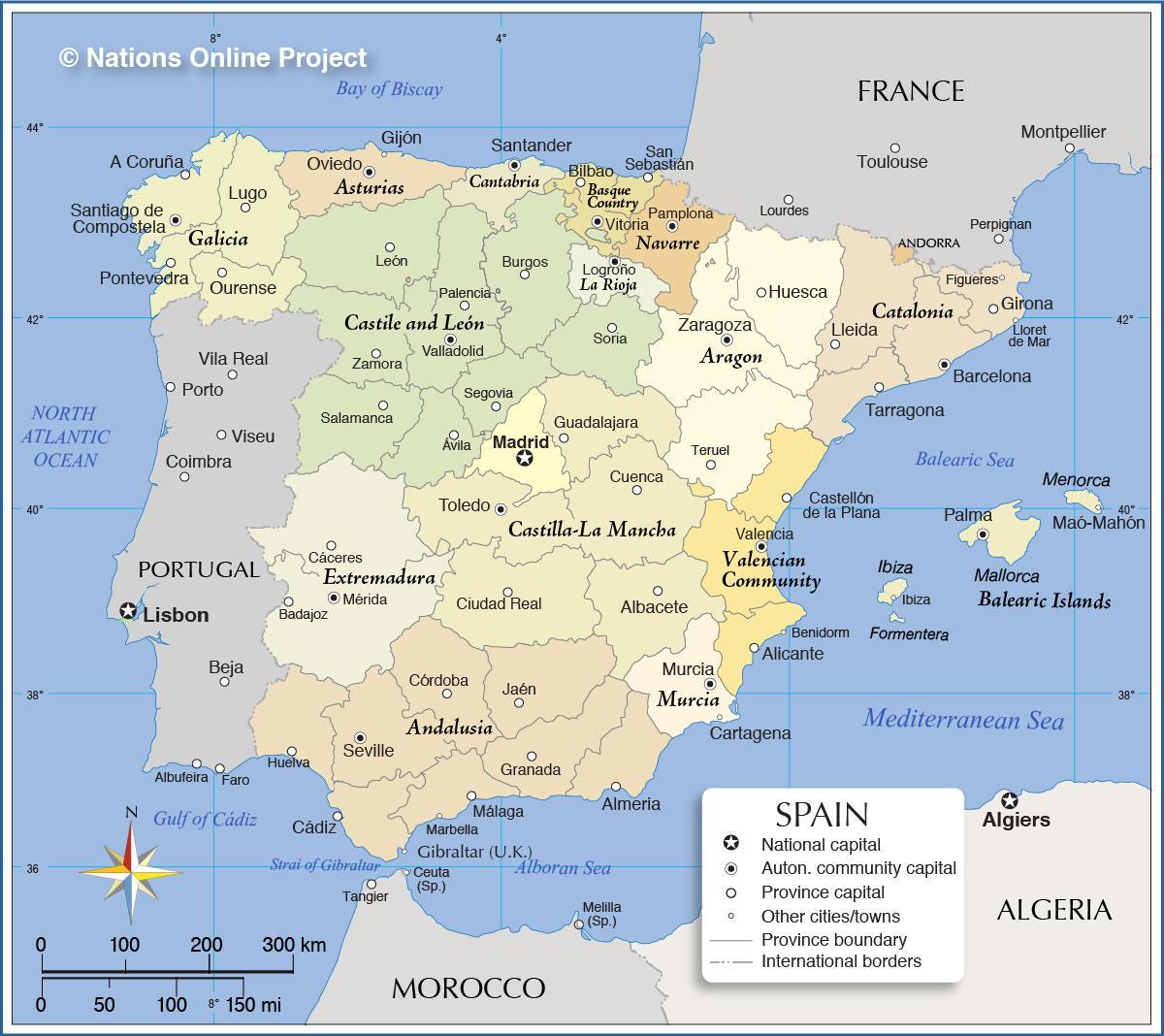search
Map of Spain
Spain in a map. Map of Spain (Southern Europe - Europe) to print. Map of Spain (Southern Europe - Europe) to download. Spain is a European country that borders the Mediterranean Sea, Bay of Biscay and the North Atlantic Ocean. The country is the fourth largest in Europe and the second largest in the European Union, covering a total area of 505,990 km2 with a population of 46,507,760 as its shown in the map of Spain. Spain also includes the Balearic Islands in the Mediterranean Sea, the Canary Islands in the Atlantic Ocean and a number of uninhabited islands on the Mediterranean side of the Strait of Gibraltar, known as Plazas de soberanía, such as the Chafarine islands, the isle of Alborán, Alhucemas, and the tiny Isla Perejil. The little Pheasant Island in the River Bidasoa is a Spanish-French condominium.
The Spanish Constitution of 1978 is the culmination of the Spanish transition to democracy. The constitutional history of Spain dates back to the constitution of 1812. Impatient with the pace of democratic political reforms in 1976 and 1977, Spain new King Juan Carlos, known for his formidable personality, dismissed Carlos Arias Navarro and appointed the reformer Adolfo Suárez as Prime Minister as its mentioned in the map of Spain. The resulting general election in 1977 convened the Constituent Cortes (the Spanish Parliament, in its capacity as a constitutional assembly) for the purpose of drafting and approving the constitution of 1978. After a national referendum on 6 December 1978, 88% of voters approved of the new constitution.
Spain is a constitutional monarchy, with a hereditary monarch and a bicameral parliament, the Cortes Generales as you can see in the map of Spain. The executive branch consists of a Council of Ministers of Spain presided over by the Prime Minister, nominated and appointed by the monarch and confirmed by the Congress of Deputies following legislative elections. By political custom established by King Juan Carlos since the ratification of the 1978 Constitution, the king nominees have all been from parties who maintain a plurality of seats in the Congress.
The Spanish State is integrated by 17 autonomous communities and 2 autonomous cities, both groups being the highest or first-order administrative division in the country as its shown in the map of Spain. Autonomous communities are integrated by provinces, of which there are 50 in total, and in turn, provinces are integrated by municipalities. In Catalonia, two additional divisions exist, the comarques (sing. comarca) and the vegueries (sing. vegueria) both of which have administrative powers; comarques being aggregations of municipalities, and the vegueries being aggregations of comarques. The concept of a comarca exists in all autonomous communities, however, unlike Catalonia, these are merely historical or geographical subdivisions.
After the return of democracy following the death of Franco in 1975, Spain foreign policy priorities were to break out of the diplomatic isolation of the Franco years and expand diplomatic relations, enter the European Community, and define security relations with the West as its mentioned in the map of Spain. As a member of NATO since 1982, Spain has established itself as a participant in multilateral international security activities. Spain EU membership represents an important part of its foreign policy. Even on many international issues beyond western Europe, Spain prefers to coordinate its efforts with its EU partners through the European political cooperation mechanisms.


